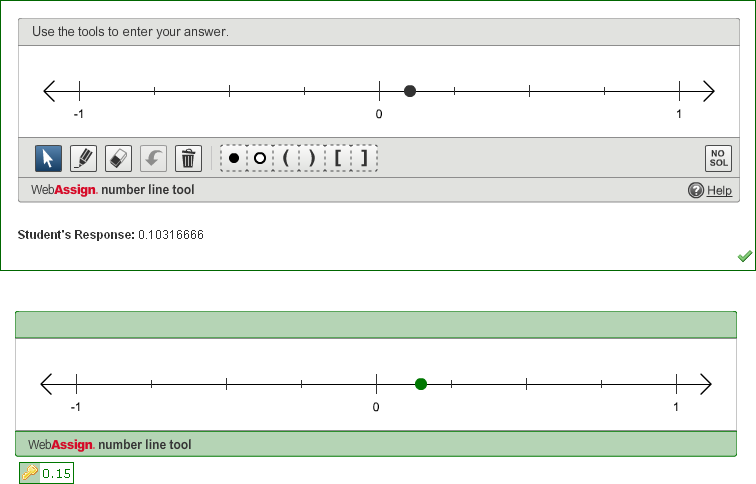For the purposes of grading, no partial credit is awarded. Each instance of the number line graph is worth one point.
If a student enters a mathematically malformed response, the student receives an error message and does not lose a submission attempt, unless you have chosen to count syntax errors as submissions at the class or assignment level. For example, if a student enters an interval from a right parenthesis to a left parenthesis, an error message is displayed.

Mathematically-Equivalent Answers
For the purposes of grading, the following equivalent answers are acceptable:
- Lone open points in the user's response are ignored. For example, a response of
 will be graded as though it were simply a response of
will be graded as though it were simply a response of  .
.
- Punctuation endpoints and point endpoints are treated as equivalent. For example,
a response of
 will be graded the same as a response of
will be graded the same as a response of  .
. - Mathematically equivalent intervals are treated as equivalent. For example, a response
of
 will be graded the same as a response of
will be graded the same as a response of  .
.
Tolerance
If an answer key object lies on a tickmark (labeled or unlabeled), a response object that overlaps that tickmark is counted as correct.
If an answer key object lies in a space between two consecutive tickmarks, a response object that is within a small distance (1/4 of the distance between two consecutive tickmarks) of the answer key object's position is counted as correct provided that the response object falls between the same two consecutive tickmarks that the answer key object falls between. A handy way to remember this rule is that this precision is expected when a student measures using a ruler.
